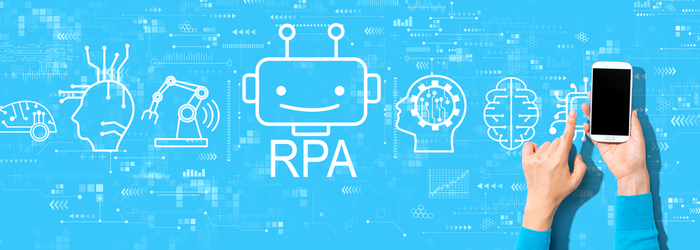Today, we live in a time of rapidly changing technology. Process automation is possible using existing technology that can work to streamline your workflows while reducing the risks of human error. One exciting development in this field is the use of Robotic Process Automation or RPA.
RPA is a software technology that when combined with artificial intelligence, makes it easy to build, deploy, and manage complex intelligent software robots that can emulate human actions like interacting with digital systems and software.
Software robots can understand what’s on the screen, complete the right actions or keystrokes, navigate systems, identify, extract, and compile data, and perform a wide range of programmer-defined actions. The benefit? Software robots can do it faster, more accurately, and more consistently than people, without the need to ever take a coffee break.
The Business Benefits of Robotic Process Automation
RPAs are designed to streamline workflows making your organization more flexible, responsive, and ultimately more profitable. RPA can also improve employee engagement and productivity by eliminating every day, mundane, repetitive tasks.
RPAs are non-invasive and can be rapidly deployed to accelerate your company’s digital transformation. It is an ideal tool for automating workflows that involve legacy systems that lack virtual desktop infrastructure, APIs, or database access.
Why It Is Transformative
Instead of taking valuable staff time, software robots can do repetitive and lower-value work such as logging into applications and systems, extracting, copying, and inserting data, moving files and folders, completing routine analyses, and filling in forms. More advanced robots can perform cognitive-based functions like chatting with customers, interpreting text, understanding unstructured data, and applying advanced machine learning to make complex decisions.
By having robots do this type of repetitive high-volume work, you free your team to focus on what they do best: collaborating, creating, innovating, and interacting with customers. Your business gains the benefits of higher productivity, efficiency, and resilience.
RPA can be used for any high-volume, rules-driven, repeatable task that is ripe for automation.
Is RPA the Same as Artificial Intelligence (AI)?
RPA is not AI and AI is not RPA. However, combining these two tools unlocks massive possibilities for business. RPA technology makes it possible to insert advanced AI skills in the form of machine learning, natural language processing, and character and image recognition.
Giving robots AI skills expands their ability to handle cognitive processes like:
• Understanding documents, including semi or unstructured data
• Visualizing screens
• Comprehending speech and carrying on conversations
AI also makes it possible to discover a range of automation opportunities and build a robust pipeline through RPA applications like process mining.
Today, companies need to accelerate AI integration into their front-line decision-making. RPAs can serve as AI delivery systems. Robots can be combined with AI to create machine learning models that bring intelligence to day-to-day operations.
At hubTGI we’re a Certified UiPath partner. UiPath is a leading RPA company and identified as a leader in the Gartner Magic Quadrant for Robotic Process Automation. Automated COVID-19 health screening is just one of the automated solutions we provide to our customers.
Give us a call to learn more!






